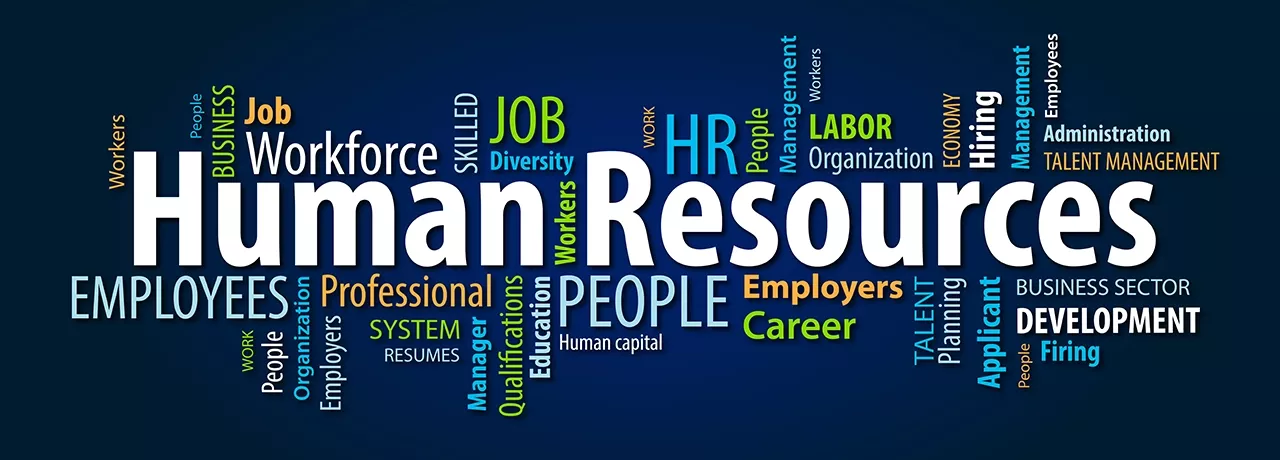
HR’s Vital Role in Influencing and Managing Change
July 27, 2022
By Terri Moore
“Company culture is having a watershed moment that’s redefining the relationship between employers and employees,” wrote Mark Lobosco, VP, Talent Solutions at LinkedIn, in a post earlier this year.
To anyone who has been working in HR longer than five minutes, this statement isn’t surprising at all, and for many who have been in the trenches for years, it’s a reckoning they’ve anticipated for a long time.
The attention and priority on organizational culture has grown exponentially over the past two years, particularly as employees have been watching closely how business leaders responded to the pandemic and their relationships with workers, both at the beginning and in the present day — some treating workers like whole humans or while other acted more like their people were simply cogs in a machine.
No single department owns workplace culture. Every department has an impact, and HR is particularly poised to help influence positive shifts, champion support for employee-forward policies and programs, and manage a changing corporate culture throughout the organization.
Here are 5 things HR professionals can do to enrich team culture.
1) Embrace the digital transformation
At the onset of the pandemic, many businesses rapidly pivoted to remote work and we all became comfortable using tools like Zoom and other platforms for digital meetings. Employee rewards and recognition programs are the next frontiers of digital transformation.
HR technology spending bounced back in 2021 after dipping in 2020 during the height of the health crisis. Now, experts predict spending on HR technology will increase more than 9% this year, even as HR budgets remain roughly the same. Because technology is a growing proportion of overall HR spending, it’s crucial to invest in tools that offer meaningful and widespread benefits, both to those who use them and those who administer them.
The good news is that this means HR managers can use technology to influence change! They can get Inspirus® Connects technology into the hands of their entire workforce, making the transition to digital rewards and recognition smooth as silk. Here are three good reasons Connects can be easily adopted:
- The user interface feels familiar. The UX is similar to popular social media platforms we use every day.
- Connects offers automation. Managers receive notifications when service anniversaries are coming up, so they don’t miss important milestones.
- The platform is fun. It supports the use of fun photos, GIFs, likes, comments, and emojis so frequent use of the platform becomes a part of employees’ daily behavior.
Offering fun, easy to use technology that can be adopted into everyday use with will help foster community and can directly impact your organizational culture in a positive way.
2) Encourage Learning & Development (L&D)
There is no time like the present to invest in learning and development across your organization. Most (87%) of organizations report they have a skills shortage, or will have one in the next few years, according to McKinsey research. Employers have often tried to fill skills gaps through hiring, rather than strategically developing talent internally, but in a tight talent market, it makes sense to invest in developing your current employees. Investing in L&D can also help employees feel more valued, which can build loyalty and motivation to help the organization succeed. This practice can attract and retain top talent too, because job hunters seek employers who support employee growth, skills training, and career opportunities.
HR can give employees the time and attention they crave so they can develop into the best versions of themselves while supporting great team culture. LinkedIn’s 2022 Workplace Learning Report listed “opportunities to learn and grow” as the # 1 driver of great work culture (up from # 9 in 2019.) Learning also powers culture, and a positive culture engages employees to innovate, be more productive and thus be more productive. Gallup research supports the notion that a positive culture leads to increased employee engagement (50-point increase over three years), growth in workforce (25% over three years), and is also linked to an 85% boost in net profit over a five-year period.
Connects Spotlights aren’t just for displaying the company’s mission, they are the perfect area to announce/highlight L&D opportunities, and the platform itself is the perfect place to recognize L&D accomplishments and achievements.
3) Recognize employees for behavior that drives your values
We hear (and talk) a lot about what employees and job seekers want as if their values are entirely separate from the values an organization might hold. But, in actuality, workers are looking to organizational values in great numbers. SHRM’s 2021 Workplace Culture report reveals that 74% of working Americans believe their organizational values helped guide them through the pandemic. So, when employees uphold your organizational values, it’s crucial to reward and recognize them for it — in very real and tangible ways.
Workplace recognition motivates, provides a sense of accomplishment, and helps employees feel valued for their work. When HR gives everyone in the organization–especially managers — the tools they need to recognize and reward specific behaviors (that align with values), it creates a strong company culture and loyalty soars.
Recognition and rewards from managers are perhaps the most common type, but there is untapped value in peer-to-peer recognition as well. Connects offers the ability for — and encourages — employees to recognize their peers for behaviors and accomplishments, knitting closer ties between employees and fostering a community of engagement and, again, facilitating a more inclusive culture.
4) Inspire employees to be their authentic selves
Creating an inclusive culture is also good for business. People who aren't comfortable bringing their whole selves to work don't contribute, question or innovate as much as employees who are. In a Jobsage survey, 70% of employees report they exhibit a different personality at work than they do at home so this is a huge opportunity for employers to work on building inclusive environments. Employees who feel psychologically safe — meaning they are more comfortable being themselves at work — are also more likely to put in extra effort. HR professionals can influence a more positive and inclusive culture where employees can be open and honest about themselves and their work, and where leaders and managers are transparent and fair.
By design, Connects is an inclusive platform, accessible by everyone, enterprise-wide, and it gives employees and leaders alike the venue to applaud people’s uniqueness and triumphs equally. Connects Spotlights can be used to communicate company-wide diversity initiatives and support inclusive behaviors, making your support of an inclusive workplace more intentional and clearer.
5) Make DEI part of your people strategy
Employers that struggle with retention rates should look at their diversity, equity and inclusion (DEI) strategy. Buck’s 2022 Wellbeing and Voluntary Benefits Survey found that almost a third of employees across age groups think their employer lacks a sufficient commitment to DEI–and that lack of commitment translates into higher turnover. How these sentiments break down in generational terms is also important, as it signals what employers can expect in the coming years. Younger workers hold a strong commitment to DEI higher than other age groups; more than half (60%) of Millennial workers expect an employer to demonstrate commitment to DEI.
The survey also found that almost a third (32%) of employees felt their benefits were not tailored to a diverse workforce. The first step is to review and update benefit offerings to support employees from different backgrounds and in different stages of life. The next step is to promote those benefits — and your broader DEI strategy — with a tool like Connects. Since the platform itself is inclusive, and accessible by all, enterprise-wide, it encourages authenticity and promotes gratitude. For more on how to make DEI a proactive part of your strategy (not an afterthought), see page 6 of our Employee Trends and Forecasts for 2022 report.
Influencing a better team culture
Culture is important. HR may not be able to completely fix culture problems within an organization, but they can influence positive change by introducing tools that actively support employee engagement and foster community. Inspirus Connects helps HR teams tackle culture challenges by creating community, providing a way to spotlight company initiatives, and offering a place where all employees can be recognized and appreciated.




